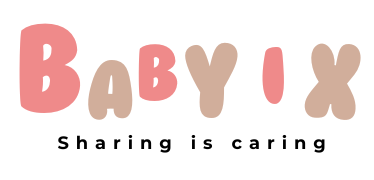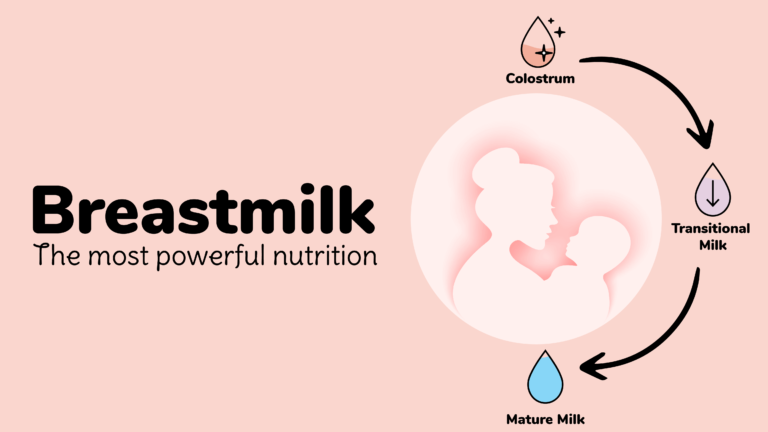Navigating Breastfeeding with a Lip or Tongue Tie

As a parent, breastfeeding can be tough but rewarding. Issues like lip or tongue ties can make it harder. Knowing about these problems is key to success in breastfeeding.
We will explore lip and tongue ties in this article. We’ll look at signs, diagnosis, treatment, and tips for overcoming challenges.
It’s important for parents to understand lip and tongue ties. Knowing the signs helps parents get help and support. This way, they can ensure their babies get the nutrients they need.
Key Takeaways
- Recognizing the signs and symptoms of lip and tongue ties is key for successful breastfeeding.
- Understanding diagnosis and treatment options helps parents overcome challenges.
- Getting support from healthcare providers and lactation consultants is very helpful.
- Parents can take steps to overcome infant feeding issues and ensure a successful breastfeeding journey.
- With the right knowledge and tools, parents can confidently navigate breastfeeding with a lip or tongue tie.
Understanding Lip and Tongue Ties in Infants
Lip and tongue ties are common in infants and can make breastfeeding hard. They happen when tissue connects the lip to the gum or the tongue to the mouth floor. This limits movement and function. For moms facing lip tie breastfeeding issues, knowing the causes and symptoms is key.
Recognizing tongue tie breastfeeding signs is important. Lip tie symptoms include a shallow latch, nipple pain, and trouble with milk flow. Understanding these can help parents start solving breastfeeding problems and ensure a good nursing experience.
- What are the causes of lip and tongue ties?
- How do these conditions affect breastfeeding?
- What are the signs and symptoms of lip and tongue ties?
Exploring these questions helps parents understand the link between lip and tongue ties and breastfeeding. This knowledge aids in making informed decisions for their child’s care and supports a successful breastfeeding journey.
Signs Your Baby May Have a Lip or Tongue Tie
It’s important to know the signs of a lip or tongue tie. This is because they can cause trouble with latching, nipple pain, and not getting enough milk. These baby latch issues can be tough for both moms and babies. That’s why breastfeeding support is key.
Here are some signs to watch for:
- Difficulty latching or staying latched
- Nipple pain or trauma
- Poor milk transfer, leading to low weight gain in the baby
- Fussiness or colic
- Clicking or smacking sounds while feeding
These signs might mean your baby has a lip tie. It’s important to get help from a lactation consultant or healthcare provider. They can help fix these problems and make breastfeeding easier.
By spotting these signs and getting the right help, moms can beat breastfeeding challenges. This way, they can give their babies the nutrients they need for growing strong and healthy.
Impact on Breastfeeding Success
Breastfeeding can be tough when a baby has a lip or tongue tie. These issues can make feeding hard and painful for moms. Getting a tongue tie treated can help, but knowing how ties affect breastfeeding is key.
Some common feeding challenges include:
- Poor milk transfer, leading to low milk supply
- Nipple pain and discomfort during feeding
- Difficulty latching, causing frustration for both mother and baby
It’s important to address milk supply and weight gain concerns. By getting tongue tie treatment and working with a healthcare provider, moms can overcome these challenges. This ensures a healthy start for their baby.
| Feeding Challenges | Effects on Breastfeeding |
|---|---|
| Poor milk transfer | Low milk supply, nipple pain |
| Difficulty latching | Frustration, discomfort during feeding |
Diagnosing Lip and Tongue Ties
Diagnosing lip and tongue ties needs a detailed check by a skilled healthcare expert. They look for lip tie symptoms and tongue tie treatment choices. Getting the right diagnosis is key for good breastfeeding support.
A healthcare pro will check the baby’s mouth for signs of a lip or tongue tie. They look for a restrictive frenulum. This can cause lip tie symptoms like trouble latching or nipple pain while breastfeeding.
They might use tools like a tongue tie assessment tool to check how bad the tongue tie is. This helps decide the best tongue tie treatment. Sometimes, they’ll send you to a specialist, like a lactation consultant or an ENT doctor, for more help.
- Difficulty latching or staying latched during breastfeeding
- Nipple pain or trauma during breastfeeding
- Low milk supply or slow weight gain in the baby
- Clicking or slurping sounds during breastfeeding
Getting a correct diagnosis and treatment plan can greatly help with breastfeeding support. It’s good for the health and happiness of both mom and baby.
Breastfeeding with a Lip or Tongue Tie: What Parents Need to Know
Breastfeeding can be tough, even more so with breastfeeding challenges like lip tie breastfeeding. But, with the right methods, parents can succeed. Knowing what their baby needs is key.
Parents should learn the best ways to position and latch their baby. This can make breastfeeding less painful and more enjoyable. Here are some tips for breastfeeding with a lip or tongue tie:
- Try different positions to find what works best for your baby
- Use a nipple shield to help with latching
- Massage the breast to help with milk flow

Managing lip tie breastfeeding also involves pain management. Use warm compresses, take over-the-counter pain meds, and get help from a lactation consultant. Knowing these tips can help parents overcome breastfeeding challenges and ensure their baby gets the nutrients they need.
Treatment Options Available
Infants with lip tie symptoms or tongue tie issues have several treatment options. A doctor’s thorough check-up is key to find the right treatment. Options include surgery like frenectomy or frenuloplasty to fix these issues.
When considering treatment, keep these points in mind:
- Check how severe the symptoms are
- See how it affects feeding and health
- Talk about the pros and cons with a doctor
After treatment, it’s important to follow a recovery plan. This includes doctor visits and following care instructions. It helps in healing well and avoiding problems.
By exploring treatment options and consulting a doctor, parents can help their babies. This helps in overcoming feeding issues and starting life healthily.
| Treatment Option | Benefits | Risks |
|---|---|---|
| Frenectomy | Resolves lip tie symptoms and tongue tie treatment | Potential for bleeding or infection |
| Frenuloplasty | Minimally invasive procedure | May require multiple procedures |
Supporting Your Breastfeeding Journey
Having the right breastfeeding support is key when dealing with lip tie and tongue tie breastfeeding. As a new mom, it’s important to have resources that help you overcome challenges. This ensures a successful breastfeeding journey.
Lactation consultants are a big help. They specialize in lip tie and tongue tie breastfeeding. They offer personalized advice and support to tackle feeding issues and reach your breastfeeding goals.
Online resources and breastfeeding groups also offer emotional support. They connect you with other moms facing similar challenges. Some examples include:
- Online forums and communities dedicated to breastfeeding and lip tie breastfeeding
- Local breastfeeding support groups and meetups
- Telephone hotlines and helplines staffed by lactation consultants and other breastfeeding experts
By using these resources and seeking support, you can have a positive breastfeeding experience. Even with challenges like lip tie and tongue tie breastfeeding.
Working with Healthcare Providers
When dealing with breastfeeding problems, it’s key to work with healthcare experts. They can help find and fix lip and tongue ties, making breastfeeding easier. Parents should ask their pediatrician for advice or look for lactation consultants nearby.
It’s important to ask the right questions when working with healthcare providers. Ask about their experience with lip and tongue ties. Also, find out how they diagnose and treat these issues. Knowing this helps parents make the best choices for their baby.
- What are the signs and symptoms of lip and tongue ties in infants?
- How do you diagnose these conditions, and what treatment options are available?
- What support and resources do you offer to help parents overcome breastfeeding challenges and address infant feeding issues?
By teaming up with healthcare providers, families can tackle breastfeeding problems. This teamwork ensures babies get the care they need. It helps solve feeding issues and starts babies and parents off on the right foot.
Long-term Considerations and Outcomes
When dealing with lip tie symptoms and tongue tie treatment, think about the long-term effects. Research shows untreated lip and tongue ties can cause dental and speech problems.
Mothers facing breastfeeding issues due to lip or tongue ties need support. Working with a lactation consultant or joining a support group can help. It connects you with others who understand your struggles.
Some long-term issues with lip and tongue ties include:
- Dental health problems, like misaligned teeth or gum issues
- Speech delays or difficulties
- Continued breastfeeding challenges, like pain or trouble latching
Parents should know about these possible problems. If you think your child has a lip or tongue tie, get professional help. With the right treatment and support, many children overcome these challenges and do well.
Building Your Support Network
Having a strong support network is key for breastfeeding success. It’s even more important when facing lip tie or tongue tie challenges. A good support network offers emotional support, guidance, and valuable resources.
For breastfeeding support, having access to lactation consultants is essential. They specialize in lip tie and tongue tie breastfeeding. These experts can give personalized advice, help with latching, and guide you through any discomfort or pain.
Support groups and communities also play a big role in your breastfeeding journey. They provide a safe space to share experiences, ask questions, and connect with other mothers. Online communities and forums are great resources for mothers facing lip tie and tongue tie breastfeeding challenges.
- Lactation consultants who specialize in lip tie breastfeeding and tongue tie breastfeeding
- Online support groups and forums for mothers dealing with breastfeeding challenges
- Local breastfeeding support groups and meetups
By building a strong support network and using valuable resources, you can overcome breastfeeding challenges. This includes lip tie and tongue tie breastfeeding. You can give your baby the best start in life.
Conclusion: Moving Forward with Confidence
Remember, you’re not alone in your breastfeeding journey with a lip or tongue tie. With the right knowledge and support, you can overcome challenges. Work with your healthcare providers and lactation consultants to find solutions for your baby.
Look for local and online communities of parents who’ve faced breastfeeding challenges and infant feeding issues. Their experiences and advice are very helpful. They can guide you on what parents need to know about managing lip and tongue ties.
Every baby and breastfeeding journey is different. Trust your instincts and advocate for what you need. Celebrate every small victory. With the right support and a positive mindset, you can find joy in feeding your baby.






